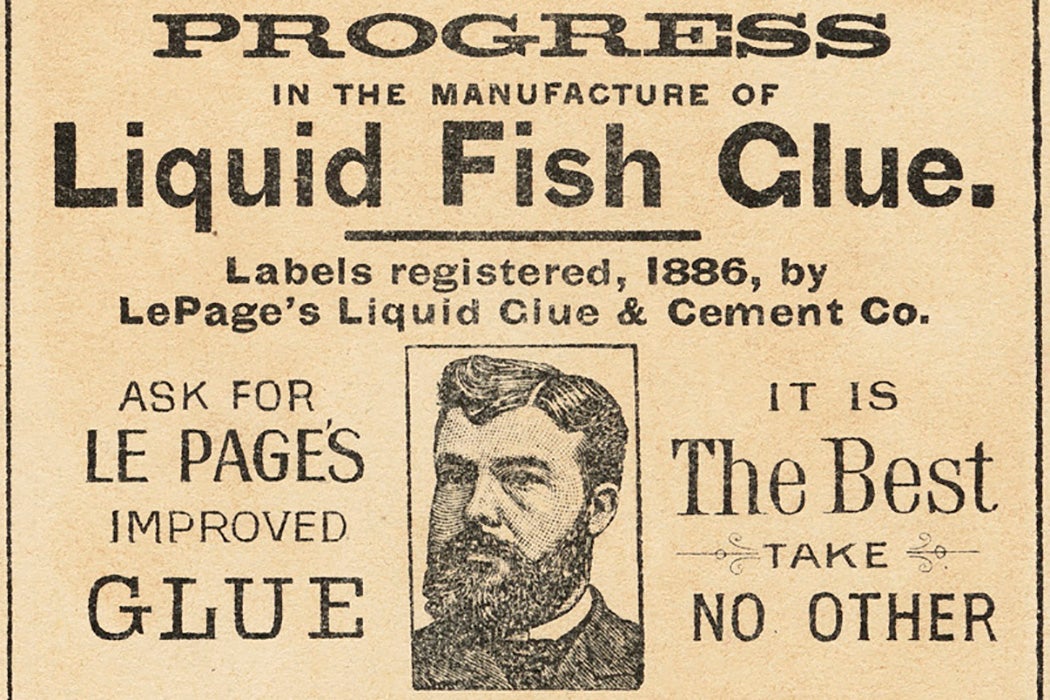Isinglass comes from the swim bladders of certain kinds of
fish and can be found in everything from beer recipes to illuminated
manuscripts. Ew? No way.

A 19th century advertisement for fish glue via Wikimedia Commons
Bartender, why is there fish glue in my beer?
Isinglass, also known as fish glue, comes from the membrane of the “sounds” (air/swim bladders) of certain kinds of fish. It has been used for centuries as a fining, or clarifying agent, in alcoholic beverages. Finings remove particles like the yeast used in fermentation. Today, there are other ways of doing this, but isinglass is still being used by some producers of beer, wine, and hard cider.
“Isinglass” comes from the word for “sturgeon bladder” in German and Dutch. As scholar John Scarborough notes, Caspian Sea sturgeon were a prime source of isinglass in the Classical era. Ihthyokolla was a key ingredient in Hellenistic and Roman medicine and pharmacology. A first-century recipe for a plaster for head wounds called for fish glue and ingredients like Eretrian earth, copper flakes, and frankincense. Medieval illuminators used isinglass to glue gold dust to manuscripts, and today, art conservators use it to repair parchment and restore paintings....
But wait, with this miracle fish glue, you also get magic tricks!
....MUCH MORE